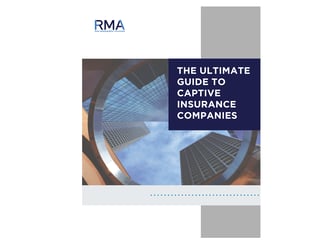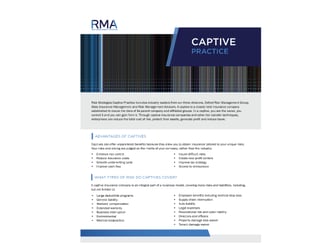Captive Insurance Company Application Process Overview
Now that you have completed all the necessary preparations for setting up your captive insurance company, it's time to move forward with the application process. This step involves preparing and submitting your application to the relevant regulatory authorities. Let's take a closer look at this crucial stage of the formation process.
Preparing and submitting the application
To begin, you will need to gather all the required documentation and complete the application form provided by the regulatory authority. This application form will typically ask for information about your company, its structure, and its proposed insurance operations. It is essential to provide accurate and complete information to avoid any delays or issues with your application.
Once you have compiled all the necessary documents and completed the application form, it's time to submit your application. Depending on the jurisdiction, you may be required to submit the application electronically or through traditional mail. It's important to carefully follow the submission instructions provided by the regulatory authority to ensure a smooth and timely application process.
Documentation requirements and timelines
The documentation requirements for captive insurance company applications can vary depending on the jurisdiction and regulatory authority. However, some common documents typically requested include:
- Business plan: This document outlines your captive insurance company's objectives, financial projections, risk management strategies, and other essential details.
Incorporation documents: These documents include the articles of incorporation, certificates of good standing, and any other relevant legal documentation related to the formation of your company. - Financial statements: Typically, you will need to provide audited financial statements for both your parent company (if applicable) and your captive insurance company.
- Reinsurance agreements: If your captive insurance company will utilize reinsurance, you may be required to submit copies of the reinsurance agreements for regulatory review.
The timelines for application reviews can also vary depending on the jurisdiction and complexity of your application. Some regulatory authorities may provide an estimated review period, while others might not have a specific timeline. It's important to be patient during this stage and follow up with the regulatory authority if necessary.
It's advisable to seek guidance from experts or consult with insurance professionals with experience in the jurisdiction where you plan to form your captive insurance company. Their guidance can help ensure that you fulfill all the necessary documentation requirements and navigate the application process smoothly.
Regulatory Review and Approval
The regulatory review and approval process is a crucial step in the formation of a captive insurance company. This process ensures compliance with all applicable laws and regulations governing the establishment and operation of captives. The timeline for the review process can vary depending on the jurisdiction and complexity of the application. It typically involves a comprehensive evaluation of the captive's business plan, financial statements, risk management strategy, and corporate structure.
Communication with regulatory authorities
During the regulatory review and approval process, it is essential to maintain open and transparent communication with the regulatory authorities. This includes providing any additional information or documents requested, addressing any concerns or questions raised, and cooperating fully with the regulatory body. Clear and timely communication can help streamline the review process and facilitate a smooth approval.
Measures to ensure compliance:
- Thoroughly review the captive's application before submission to ensure accuracy and completeness.
- Respond promptly to any requests for additional information or clarification from the regulatory authorities.
- Engage legal and financial advisors experienced in captive insurance regulation to navigate the review process effectively.
- Maintain open lines of communication with the regulatory authorities and provide regular updates on the progress of the application.
It is important to note that the regulatory review and approval process may differ among jurisdictions. It is advisable to consult with experts in captive insurance formation and regulation to ensure compliance with specific requirements and maximize the chances of a successful application.
By diligently following the regulatory review and approval process, captive insurance companies can lay a solid foundation for a successful and compliant operation. The thorough evaluation by regulatory authorities helps maintain the stability and integrity of the captive insurance industry, benefiting both the insurers and insureds.
Capitalization and Solvency Requirements
Capitalization requirements: Before the formation of a captive insurance company, it is essential to understand and meet the capitalization requirements set by the jurisdiction where the company will be formed. These requirements typically include a minimum amount of capital that must be contributed by the owners or shareholders of the company. The purpose of these requirements is to ensure that the captive insurance company has sufficient financial resources to meet its obligations and provide coverage to its insured parties.
Solvency ratios: Once the captive insurance company is formed, it is crucial to maintain adequate solvency ratios to continue operating effectively. Solvency ratios measure the company's ability to meet its long-term financial obligations. They are calculated by comparing the company's capital and reserves to its liabilities and potential claims. It is important to regularly review and assess the solvency ratios to ensure that the captive insurance company remains financially stable and able to fulfill its obligations.
Understanding and meeting capitalization and solvency requirements are crucial steps in the formation and ongoing operation of a captive insurance company. Consulting with professionals who specialize in captive insurance can help navigate the complexities of these processes and ensure compliance with regulatory standards.
Licensing and Registration
Once the Captive Insurance Company formation process is complete, the next step is to obtain the necessary regulatory licenses. These licenses ensure that the captive is operating in compliance with the laws and regulations of its domicile jurisdiction. The requirements for obtaining these licenses may vary depending on the jurisdiction, so it is important to research and understand the specific requirements for the chosen domicile. Registering with relevant authorities.
In addition to obtaining regulatory licenses, the captive must also register with the relevant authorities. This registration process typically involves submitting the necessary documentation and paying any required fees. The authorities may include insurance regulators, tax authorities, and other relevant governmental bodies. It is important to complete this registration process to ensure the captive is legally recognized and able to operate within the jurisdiction.
Overall, the licensing and registration process is a crucial step in the formation of a captive insurance company. It ensures that the captive is legally recognized and compliant with the relevant laws and regulations. By completing this process, the captive can operate with confidence and provide its insured parties with the necessary coverage.
Forming a Captive Insurance Company can be a complex and detailed process, but the benefits and potential challenges make it a worthwhile endeavor for many businesses. The key considerations and best practices in the formation process are crucial to ensure success and compliance. It is important to consult with professionals who specialize in captive insurance to navigate the application process smoothly. By understanding the benefits and potential challenges, businesses can make an informed decision about whether forming a Captive Insurance Company is the right choice for them.
Explore
- Solutions
- Captive Insurance
- Captive Insurance Overview
- What is Captive Insurance?
- Definition of Captive Insurance
- Types of Captive Insurance
- Typical Structures of a Captive Insurance Program
- Why Form a Captive Insurance Company?
- Captive Insurance Utilization and Value
- Evaluating a Captive Insurance Program
- How to Setup a Captive Insurance Company
- Operating a Captive Insurance Company
- Captive Insurance Operating Costs
- Retaining Risk vs. Financing Risk
- Risk Distribution Through Captive Insurance
- Taxation of a Captive Insurance Company
- Captive Insurance Domiciles
- News and Insights
- About Us
Practice Leader(s)

Captive Practice Leader, Managing Director

Captive Practice Leader, Managing Director
Max Jong is the Captive Practice Leader and Managing Director at Risk Management Advisors, an alternative risk and captive management firm. Max began his career at Northwestern Mutual in 1994 after graduating from UCLA. Over 12 years, he built a successful financial services practice while heading up an office overseeing 50 professionals in Los Angeles and Irvine, California. The office was perennially one of the top producing organizations in the Northwestern Mutual system.
Max joined his partners at Risk Management Advisors in 2007 as he began to work with more sophisticated mid-market business owners. RMA specializes in the design, formation, and management of captive insurance companies. There’s also an emphasis on self-funded group benefits as well as other creative alternative risk management strategies. The firm assists business owners in better managing their risks without jeopardizing their balance sheets. In 2019, he headed up a merger with Risk Strategies, a Top 10 private national specialty insurance brokerage and consulting firm. Since then, he was appointed as the Captive Practice Leader to oversee the growth and development of the organization.
For five years, Max served as an Independent Director for Fiat Lux Risk and Insurance Company, one of the largest and most sophisticated captive insurance companies. Fiat Lux was established by the University of California Regents to better manage the broad risks of the University of California system.
Max has also been a lifelong supporter of Big Brothers Big Sisters of Greater Los Angeles. He initially volunteered to be a mentor in 1995 and is currently mentoring his second "Little." Max was asked to join the Board of Directors in 2000 and eventually served as their Board Chair. After 20+ years as an active board member, he continues to support the organization by serving as a Trustee.
He is married to Alice, and they’re raising two young children, Hunter and Hayden. Max and Alice are happily married despite her irreparable mistake of going to USC. He loves to travel, golf, and is a hopeful Lakers fan.
Resources








